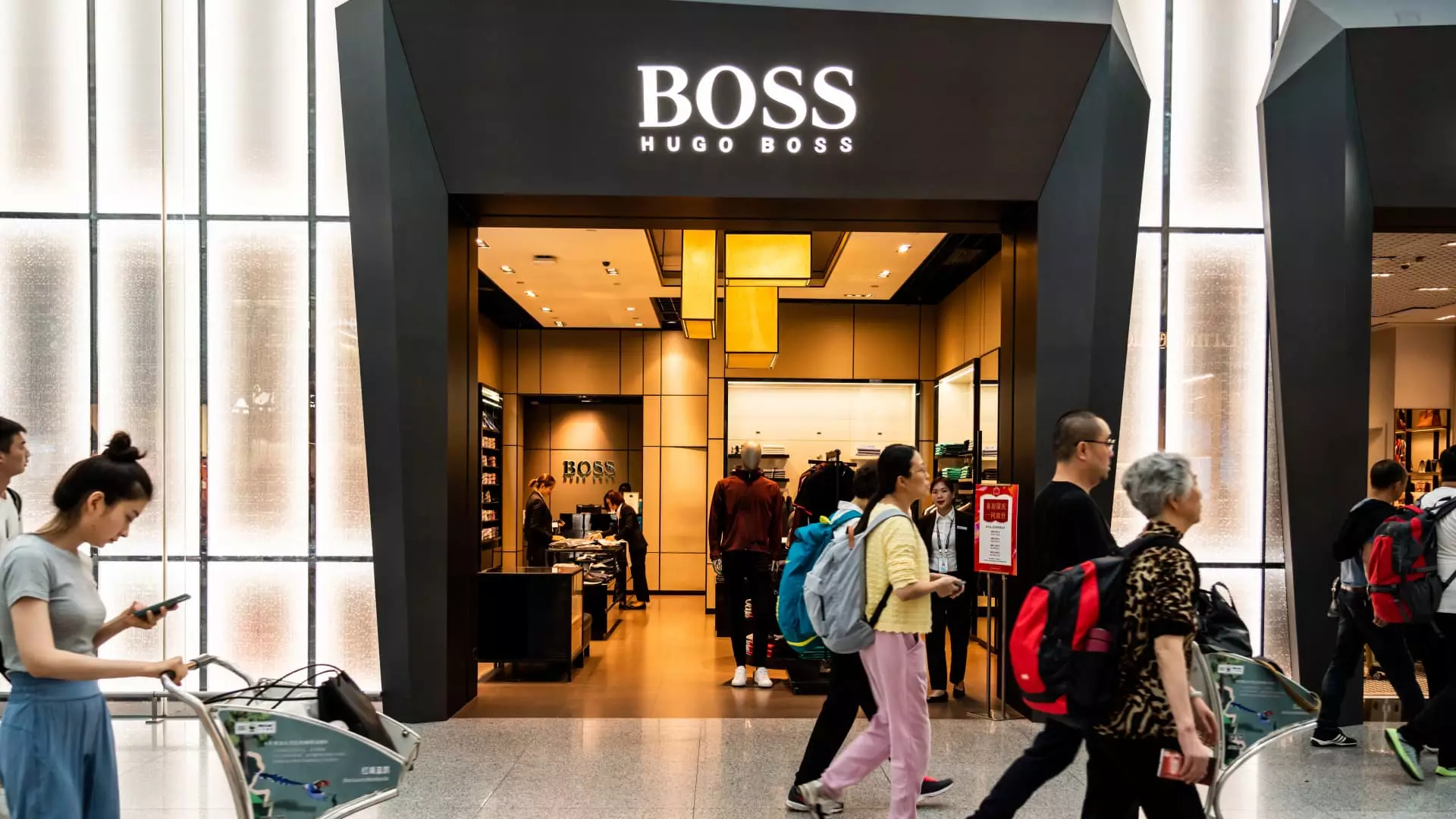Hugo Boss, a German fashion house, faced a significant setback as its shares plummeted by up to 10% following the company’s decision to revise its sales outlook. This move reflects the ongoing challenges in the luxury sector, with the company citing “persistent macroeconomic and geopolitical challenges” as key factors contributing to the revised forecast. China and the U.K. were specifically highlighted as particularly difficult markets for the fashion house, indicating a broader trend of global uncertainty impacting the industry as a whole.
The company’s adjusted sales forecast for the year now stands at up to 4.35 billion euros, lower than the initial projection of up to 4.45 billion euros. This marks the second guidance cut made by Hugo Boss in the same year, with the retailer previously signaling a potentially slower sales growth rate. The latest revision further moderates the growth target to 1% to 4% in group currency, signaling a cautious approach in light of the prevailing economic conditions.
Hugo Boss reported a 1% decline in group sales during the second quarter, driven mainly by challenges in Asia and Europe. The company’s operating profit also took a hit, falling by 42% year-on-year to 70 million euros. These results were attributed to softer sales trends and strategic investments made by the company. Despite these challenges, CEO Daniel Grieder remains optimistic about the company’s ability to return to profitable growth in the second half of the year, underscoring the resilience of the brand in the face of adversity.
The difficulties faced by Hugo Boss are not unique, as other high-end fashion brands like Burberry and LVMH have also reported slowdowns in sales amidst macroeconomic and geopolitical concerns. Burberry, for instance, experienced a significant drop in share prices after issuing a profit warning and making strategic changes in its leadership. Similarly, Swiss luxury group Richemont faced challenges with just 1% sales growth in the first quarter, highlighting the pervasive impact of global economic uncertainties on the luxury sector.
One of the key factors influencing the luxury industry’s performance is Chinese consumer behavior. The weakening demand from Chinese shoppers, particularly in mainland China, has been a long-standing issue for luxury brands. However, there are indications that Chinese consumers are once again engaging in international spending, with many opting to make purchases abroad. This trend suggests a potential shift in consumer behavior that could impact the overall performance of luxury brands in the coming months.
The challenges faced by Hugo Boss underscore the broader issues plaguing the luxury sector, including macroeconomic uncertainties, geopolitical tensions, and shifting consumer preferences. While the company remains optimistic about its long-term prospects, it must navigate a complex landscape marked by evolving market dynamics and changing consumer behaviors. By staying agile and responsive to these challenges, Hugo Boss can position itself for sustained growth and success in the competitive world of high-end fashion.

